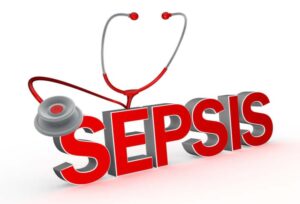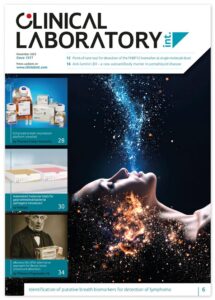IL-6 biomarker breakthrough for early sepsis detection
New research identifies interleukin-6 as a superior diagnostic biomarker for sepsis in high-risk populations including neonates, children, and pregnant women.
A study presented at ESCMID Global 2025 has demonstrated that interleukin-6 (IL-6) outperforms traditional biomarkers in the early detection of sepsis across multiple vulnerable patient groups. The findings mark the first comprehensive evaluation of IL-6’s diagnostic performance in neonates, children, and pregnant women within a real-world clinical setting.
Addressing a global health challenge
Sepsis remains one of the world’s leading causes of mortality, claiming approximately 11 million lives annually. The condition, which occurs when the immune system overreacts to an infection, poses particular risks to young children under five years of age and pregnant women due to their altered immunological states and heightened susceptibility.
The diagnosis of sepsis presents significant challenges, especially during pregnancy when physiological changes can mask early signs. Traditional diagnostic biomarkers such as C-reactive protein (CRP) and procalcitonin (PCT) have long been utilised but suffer from delayed responses and suboptimal sensitivity.
Given sepsis can progress rapidly to life-threatening stages, researchers have been actively seeking biomarkers offering faster and more accurate diagnosis to enable timely clinical intervention.
Superior diagnostic performance
The retrospective cohort study analysed serial blood samples from 252 patients across three groups: 111 paediatric cases, 72 maternity cases, and 69 neonatal cases, all with suspected sepsis. Researchers classified patients by infection type and physiological response, evaluating diagnostic accuracy through AUROC analysis.
IL-6 demonstrated impressive performance in distinguishing bacterial from non-bacterial infections, with AUROC values of 0.91 in children, 0.94 in maternal patients, and 0.86 in neonates. The biomarker also effectively stratified sepsis severity, differentiating between mild infection, sepsis, and septic shock.
In terms of sensitivity and specificity, IL-6 exceeded 80% in both paediatric and maternal cohorts. The biomarker detected bacterial infections with 91% sensitivity in children and 94% in pregnant women. Among neonates, IL-6 maintained high specificity at 97.1% but showed lower sensitivity at 67.6%, possibly reflecting the complexities of diagnosing neonatal sepsis where no clear consensus definition exists.
Early detection advantage
Dr Seán Whelan, the study’s lead author, highlighted IL-6’s rapid response profile as a key advantage: “IL-6 secretion rises within 1-2 hours, peaks at 6 hours and decreases by 24 hours, whereas CRP and PCT peak much later at 48 and 24 hours, respectively. This faster, steeper response makes IL-6 a promising biomarker for earlier sepsis detection.”
The clinical application of IL-6 is already underway in select institutions. “IL-6 is already in routine use in our institutions, the Rotunda Hospital and Children’s Health Ireland at Temple Street, for these populations,” Dr Whelan noted. “The challenges to wider adoption have been lessened by the development of commercially available testing on commonly used platforms, which can provide real-time results. The COVID-19 pandemic accelerated this process, as IL-6 testing became more widely used in assessing patient inflammation.”
Future implications
The research underscores IL-6’s potential to transform sepsis diagnosis in vulnerable populations. When combined with clinical assessment, IL-6 could significantly improve decision-making processes and support timely, targeted treatment interventions for high-risk patients.
As sepsis continues to present diagnostic challenges, particularly in vulnerable groups such as neonates and pregnant women, biomarkers like IL-6 that enable earlier detection may prove instrumental in reducing mortality and improving patient outcomes.
Reference:
Whelan, S. O., et al. (2025). Interleukin-6 as a diagnostic biomarker for sepsis in neonates, children and pregnant women – a real-world cohort study. Paper presented at ESCMID Global 2025, Vienna, Austria, 12 April 2025.





